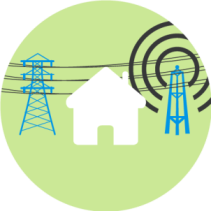-
-
Nashville, Tennessee
-
For this week’s lead story gives you cause for concern, here are three quick fixes to improve the health of your home environment, writes Lucy Boon.
1. Get some houseplants
It’s pretty easy to improve indoor air quality with the addition of plain old houseplants.
 According to a study by US professor Vadoud Niri and his team at the State University of New York at Oswego, houseplants are a good way to absorb volatile chemical compounds in the air.
According to a study by US professor Vadoud Niri and his team at the State University of New York at Oswego, houseplants are a good way to absorb volatile chemical compounds in the air.
For instance, the crassula family of plants (money or jade plant) is especially good at absorbing toluene — emitted by heating oil, paints and lacquers.
The study also showed the common spider plant absorbs more than 90 per cent of o-Xylene, found in plastic and rubber products.
2. Open a window
Clare Sherriff (see lead story) advises us to open our windows whenever we can.
She says: “Studies have shown that naturally ventilated buildings are better for us than air-conditioned ones. Likewise, hang your dry-cleaning outside to air for a few hours before bringing it into the house, and make your home a shoes-off zone to limit the amount of chemical compounds you bring to your indoor environment.”
3. Charge your electricals downstairs
Electromagnetic fields from technology are said to interfere with the function of cells in your body, so it’s best to try to limit them near you.
Clare advises to not sleep close to fuse boxes and to charge your mobile phones downstairs, rather than by your bedside.
According to Professor Vadoud Niri at the State University of New York at Oswego, putting a peace lily (spathiphyllum wallisii) on your bedside table could really help, too, as the plant was found to absorb electromagnetic radiation emitted by computers.
PS Clare Sherriff’s forthcoming book, The Healthy Buildings Book, is due for publication next year. It discusses the work of leading environmentalists, scientists, academics architects and journalists on the subject.
Posted in EMF-home-inspection, Safty and Remediation